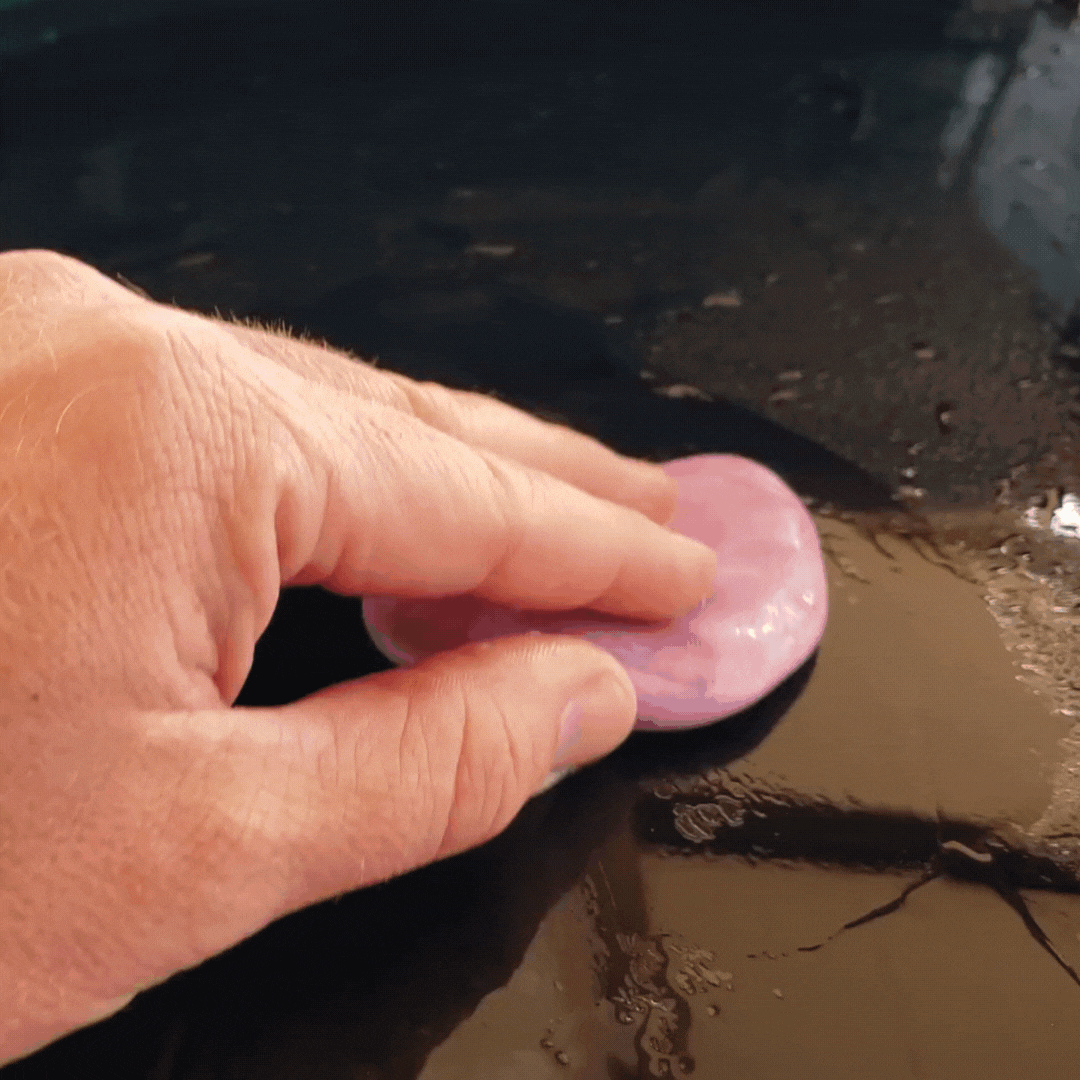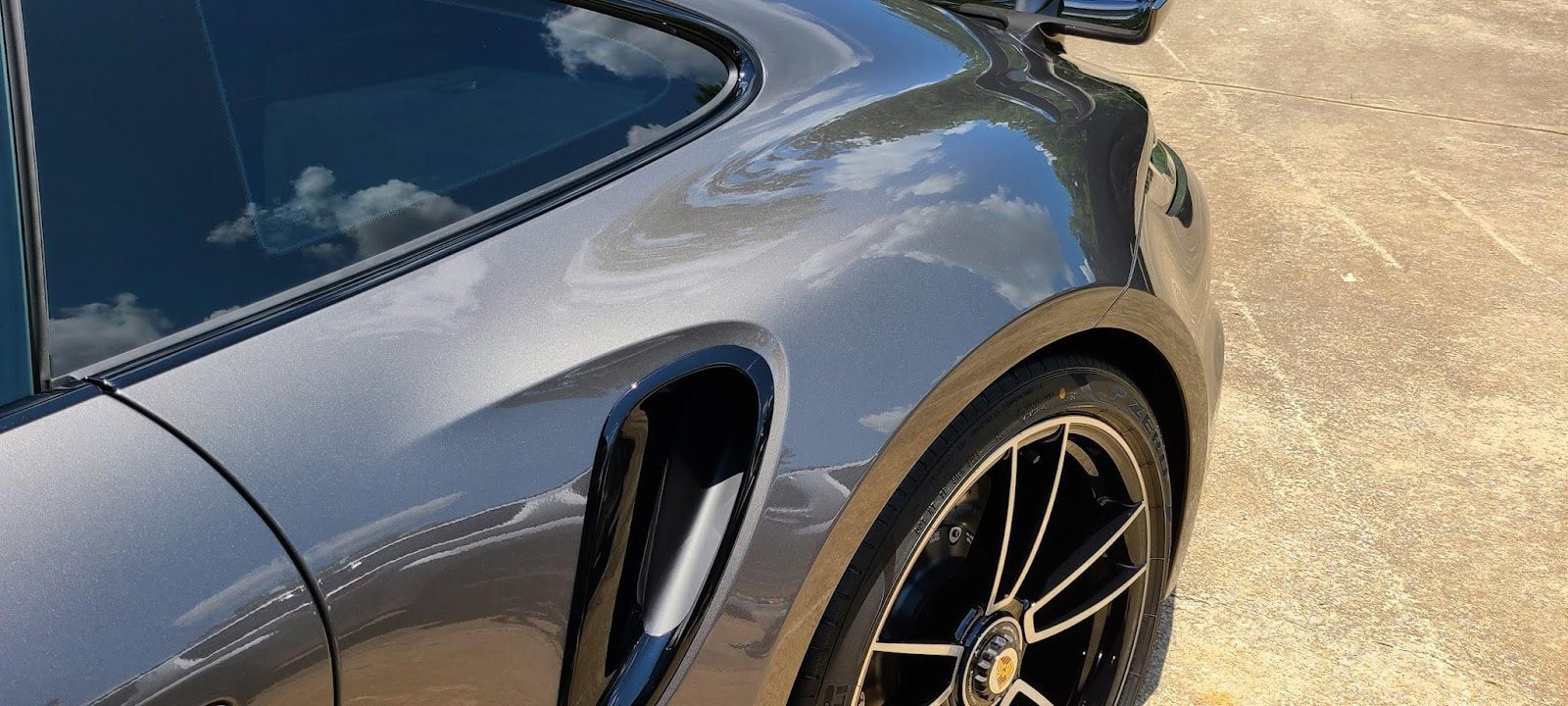It’s finally time to buy that new vehicle you have had your eye on! But, all that comes to mind as you drive off the lot is the thought of it getting scratched, that first rock chip on the front bumper, or a dull and faded paint finish. How can you help prevent these things from occurring and keep your vehicle looking it’s best?
What if I told you there are ways to help protect and maintain that finish for years to come? There is even a process that will have your paint looking even better than showroom new! I’ve had countless clients over the years tell me “It looks better than new!” after picking up their vehicle from my shop.
Keep reading and I will share some DIY and professional products, processes, and tips on new car paint protection and how to keep your new vehicle looking it’s absolute best.
Here is a quick overview of what we will cover…
- Protect Your Investment
- New Vehicles Are Not Perfect
- Types of Protection – Do It Yourself
- Types of Protection – Professional Application
- Tips for Choosing Surface Protection for your Needs
Protect Your Investment
Your paint finish shields the body panels of your car from rust and corrosion. It’s what makes your vehicle look good when you drive around town. If not taken care of properly, over time it will receive permanent damage. Things like UV rays, bird droppings, environmental fallout, bug remains, stone chips, and more will all wreak havoc on your paint finish if left unprotected.
So when is the best time to protect your vehicle’s paint finish? You guessed it, when it is brand new! The sooner you address protecting the paint of your new ride, the faster you can get to driving with more peace of mind knowing that it is shielded from the elements. Unfortunately, there is not a solution to protect your vehicle’s surface from any and all damage, but the solutions we will cover will help to tremendously reduce the chances.
We will cover a few different types of paint protection a little later, but let’s cover some more benefits first. One of the biggest benefits would be resale value. Keeping the aesthetics of the car as nice as possible will help to increase the resale value of the vehicle for when it comes time for you to sell. Your used vehicle will be much more desirable to the future buyer if it is free of scratches, rock chips, oxidation, etc. Another benefit is ease of maintenance. A slick and protected surface is much easier to clean and keep it that way than a rough surface covered in contaminants. I’ve had many clients amazed at the ease of maintenance after initial services were performed to protect their vehicle’s surfaces.
New Vehicles Are Not Perfect
“It looks better than when I drove it off the showroom floor!” Some may say that is impossible, but I have had many clients tell me those exact words. Well maybe not those EXACT words, but close to it! The truth is, your new ride has more than likely been on quite the journey before even making it to the dealership. A lot of new vehicles arrive already needing a professional’s touch. Between shipping contaminants, such as railroad dust that can embed itself into the surface of the clearcoat, to improper dealer care, and even a lack of paint clarity from the manufacturer. The good news is that all of these items can be addressed by a proper decontamination and paint correction by a professional detail facility.
There are a couple of things that a new buyer can do to minimize the damage to their new vehicle and their pocket book. First off, request that the dealer not perform a complimentary detail of your vehicle before delivery. This usually results in damage to the paint as subpar tools and products are generally used in this process. A dirty wash brush that has washed hundreds of other vehicles without being properly cleaned can wreak havoc on a fresh paint finish. This may not be the case with all dealerships, but in my experience it is more often than not. It’s best to avoid this if possible.
Another thing to say no to is the dealer installed paint protection coating/sealant. Most of the time these are overpriced, subpar, products that are used as an upsell to drive up the dealer’s bottom line. The many products I have experienced offer very little (if any) protection and longevity, especially when compared to the prices that are being charged for the application. Many times these products are applied without the customer’s consent and tacked onto the price of the vehicle, so be sure to be proactive by declining this before the purchase of your new ride.
Types of Protection – Do It Yourself
If you want to protect and maintain your vehicle’s paint finish, there are a few options available. We’ll go over some “Do-It Yourself” solutions such as waxing or sealant application in this article; but we also recommend that readers take advantage of professional applied ceramic coatings and/or paint protection film for the ultimate form of preservation.
If you are more of a DIY person or on a strict budget, you could do a simple clay bar and wax or paint sealant to cleanse and provide a solid layer of hydrophobic protection to the surface. A clay bar treatment is used to pull embedded contaminants from the clear coat to provide a smooth surface for the wax or sealant to bond. More information on the clay bar process can be found in our article on DIY Paint Correction. To take this process “one step” further, you could do a 1 step machine polish to better prepare the surface for protection and amp up the gloss. The linked article also provides step by step instructions on performing a 1 step machine polish. This process will take care of any light surface defects and improve the clarity, depth, and gloss of the paint finish.

The old school carnauba “wax job” still offers up a good bit of UV and hydrophobic (water repelling) protection, but you will need to reapply every 2-3 months in order to maintain a solid layer on the surface. There have been some advancements with wax over the last few years, such as ceramic based waxes. These silicon dioxide based products provide better durability and hydrophobic properties when compared to their carnauba counterparts.
If you are looking to step up the longevity of protection while still keeping it simple, I would look into applying a paint sealant. Polymer based sealants have been around for years and generally seem to provide 4-6 months of endurance. Just like the ceramic based wax products, there are now sealants infused with silicon dioxide that grant 6+ months of protection. The most durable paint sealant I have personally used, is a resin based product from ShineSupply.com, called Daddy-O. This product can endure for 8-12 months or more, giving you plenty of time between applications. You can purchase Daddy-O here.
If you are looking to take your DIY protection plan to the next level, you could try your hand applying Paint Protection Film (PPF) kits on smaller areas that are more prone to damage. A lot of PPF suppliers have DIY friendly kits to protect your door edges, door jambs, door handle cups, etc. These kits will require some soapy water, a squeegee, and a bit of patience to apply. If you are looking for a bit more PPF coverage, we will cover professional applications in the next section.
Types of Protection – Professional Application
If you have the budget and are looking to safeguard your new purchase from the roads and elements and have it looking its absolute best; look into professional options like paint correction, ceramic coatings, and large panel paint protection film applications.
Paint correction will remove surface defects that may have been inflicted at the factory, during shipping, or by the dealership and leave you with a stunning paint finish. When topped with a quality ceramic coating, the gloss, surface slickness, and ease of maintenance will be unmatched for years to come. Ceramic coatings contain silicon dioxide (Si02) that chemically bond with your vehicle’s clear coat forming a sacrificial layer of protection that can last for years when properly maintained. Speaking of maintenance, washing a ceramic coated vehicle will be much easier and enjoyable in comparison to a vehicle without surface protection. The slippery surface and hydrophobic properties make clean ups a breeze!
Paint protection film is a nearly invisible urethane film that protects your paint from rock chips, scratches, and other unsightly damage that can occur when driving your vehicle. When it comes to paint protection film, you can go from mild to wild with coverage options. You could go with simple coverage of the high impact areas like the front bumper and partial hood/fender, full front end coverage, or even go as far as covering every painted surface with PPF. It really depends on your driving habits, budget, and plans for the vehicle. Want to stand out from the crowd and change up the looks of your vehicle while providing the ultimate surface protection? Look into satin finish paint protection films. Do your research and make sure to choose a certified and reputable facility for any of these services mentioned. Have it done right the first time!
topped with C.Quartz Professional Ceramic Coating.
A lot of the shops that provide these services may also be able to help you maintain the vehicle. For example, you may be able to get on a bi-weekly or monthly maintenance wash routine to keep your ride in tip top shape. At minimum, I recommend taking your vehicle in for a check up at least once a year so that any decontamination can be properly removed from the surfaces and ensure that the ceramic coating and/or PPF is in good shape and performing at its best.
Tips for Choosing Surface Protection for your Needs
At the end of the day, it all comes down to your specific needs, plans, and budget. How long do you plan to keep the vehicle? Will it be daily driven on highways and sit outside in the elements, or is it a vehicle that is only used on special occasions and always garage kept? Are you able to do some work yourself to save some money, or will you need to pay a shop? These are a few questions you should factor into your decision making process.

